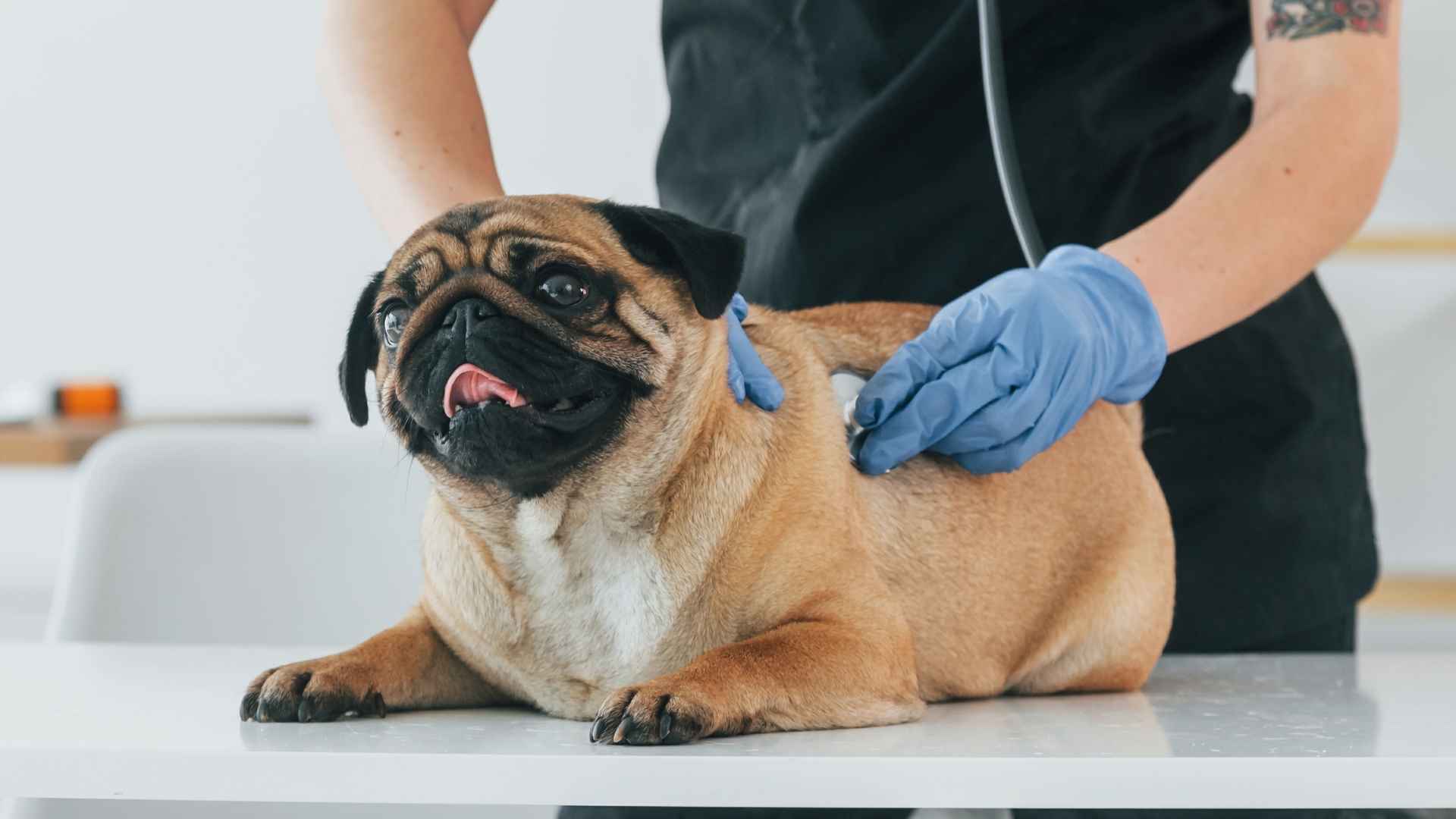Some dog breeds have more health problems than others. This is often because they were bred to look a certain way, like having flat faces, long bodies, or very short legs. While these features make them look really cute and desirable, they can also lead to serious health problems.
Common problems faced by dogs due to overbreeding practices include trouble breathing, walking, and even seeing. Other dog breeds may get sick more often or need surgeries.
These problems can start at a young age and last their whole lives. That in no way means that these breeds don’t make good pets; they just need extra care, more vet visits, and sometimes special diet and treatments.
In this article, we will look into some of the most unhealthy dog breeds and their common health concerns so that you can make a smart choice and give your dog the best care possible.
Most Unhealthy Dog Breeds
1. English Bulldog

The English Bulldog is known for its distinct look. The wrinkled face, short nose, muscular build, and a prominent underbite are hard to miss.
Although they are loving and calm companion breeds, they come with a range of health issues.
Common Health Problems
Breathing Problems: Due to their flat face, Bulldogs often suffer from brachycephalic airway syndrome (BOAS), making it hard to breathe, especially during exercise or in heat.
Skin Infections: Their skin folds trap moisture and dirt, which leads to frequent infections.
Joint problems: Bulldogs are prone to hip dysplasia and arthritis due to their stocky, heavy build. Obesity is also a common concern due to their love for food, which also exacerbates other health conditions.
Overheating: Due to the breed’s pushed-in nose, it is hard for them to cool down and regulate body temperature. Hence, they need careful monitoring in hot weather.
While English Bulldogs are a great addition to any family, they need good care. As per PetMD, feeding them high-quality food in well-calculated portions is important for a healthy weight. You should also be prepared for frequent veterinary visits and bills.
2. Great Dane
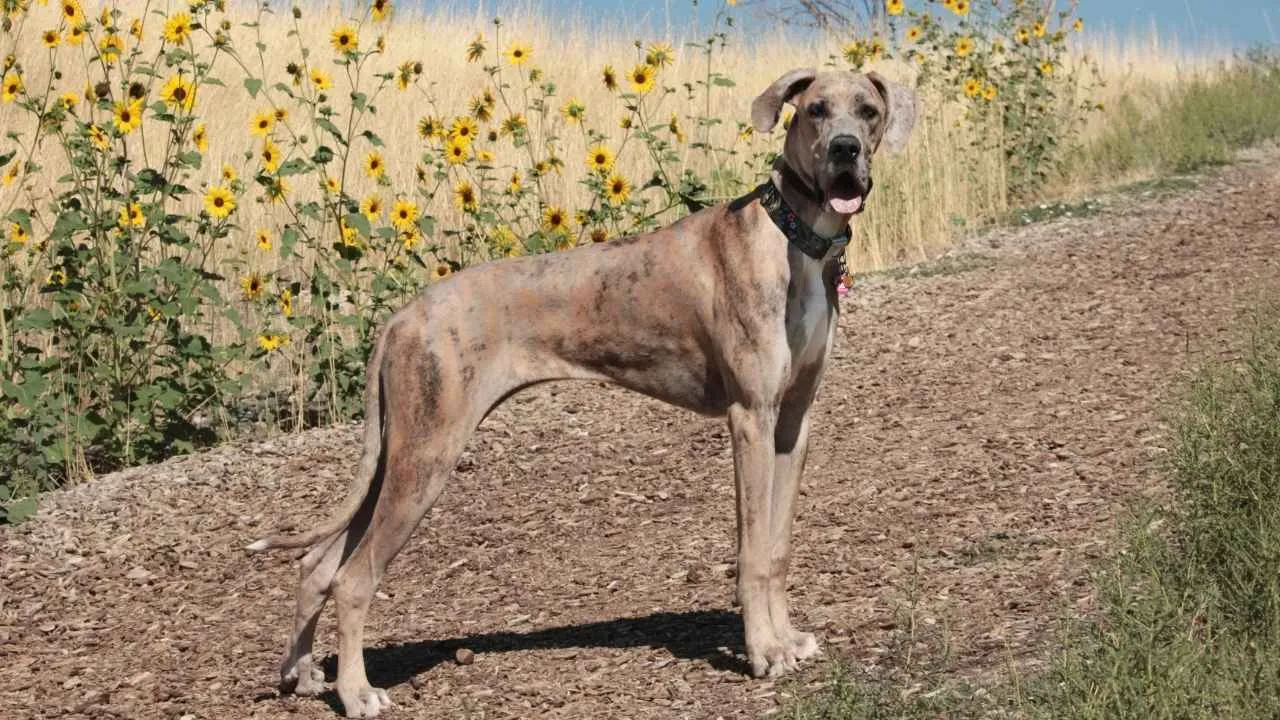
The Great Dane is one of the tallest breeds in the world, often known as the ‘Gentle Giant’. It has a calm and friendly nature, which is surprising for its appearance, and is incredibly loyal to the family.
Here are a few health problems that the breed faces due to its large size.
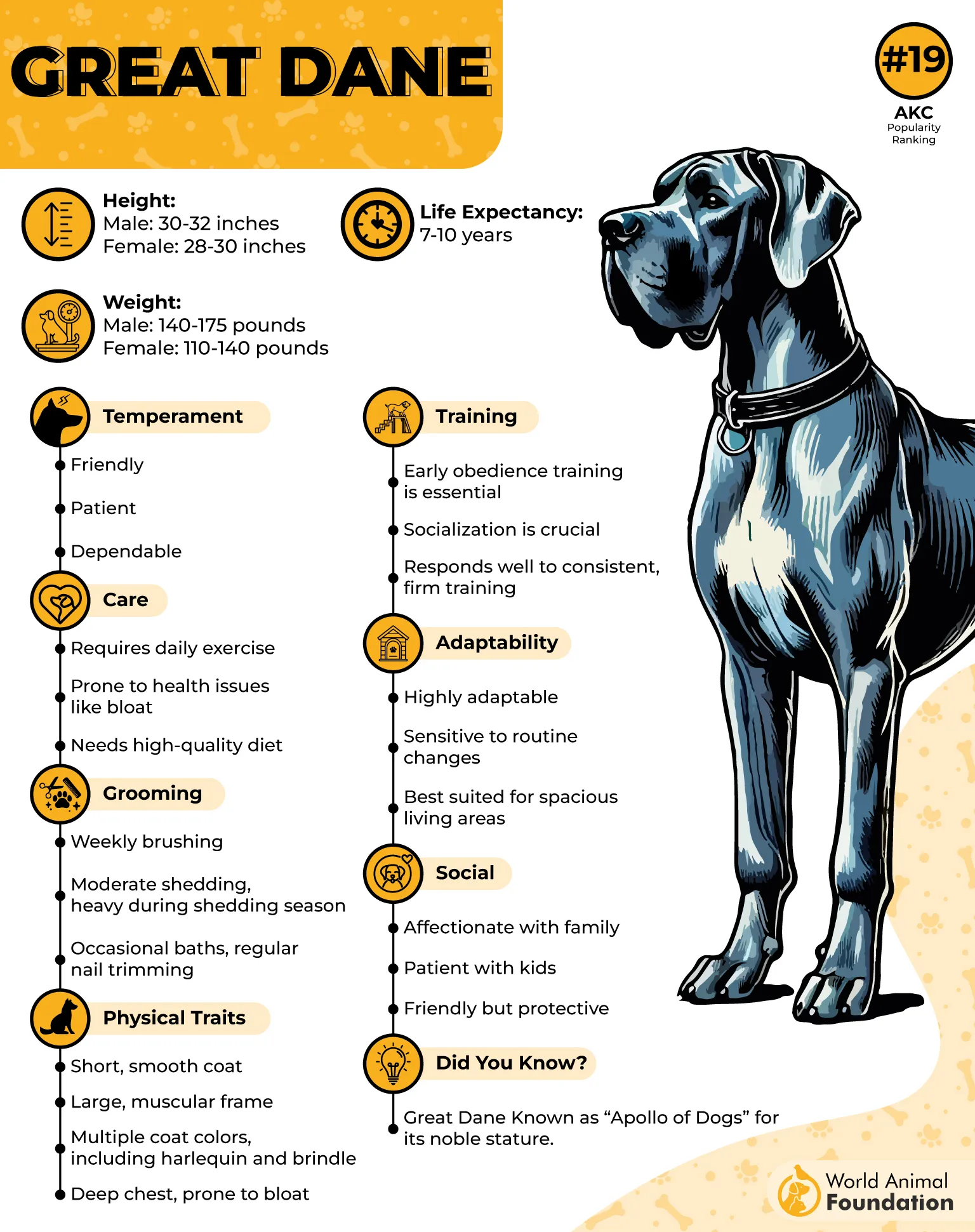
Common Health Problems
Bloat: Giant breeds are usually at risk of this dangerous disease, also called the Gastric Torsion. The stomach fills with gas and can twist, cutting off the blood flow. It can be deadly within hours and requires surgery.
Heart disease: Great Danes are prone to dilated cardiomyopathy (DCM. It is a condition where the heart becomes weak and enlarged.
Bone and Joint Problem: Large breeds have more pressure on hips and elbow dysplasia, which increases the risk of arthritis and dysplasia, especially in the growing bones of puppies.
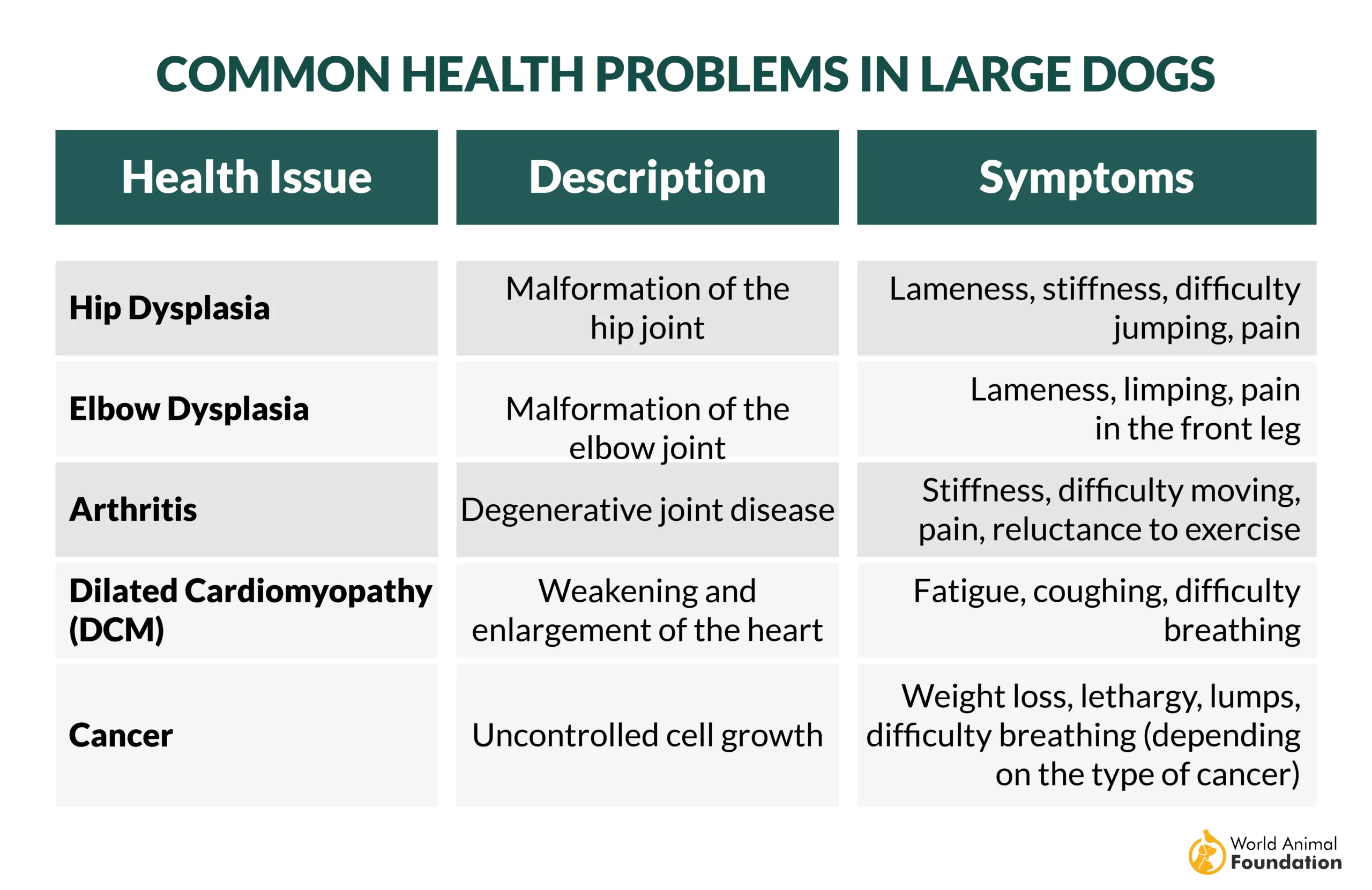
Short Lifespan: Most Great Danes live for only 7-10 years, which is shorter than many breeds.
To give them a healthy life, it is important to feed them a healthy diet designed specifically for large dog breeds. Avoid exercise around meal times to reduce the risk of bloat, and check regularly with the vet for early signs of heart and joint problems.
3. Boxer

The Boxer is a strong, playful, and energetic dog that loves being around people. It is known for loyalty, intelligence, and a fun-loving nature.
Boxers are at a higher risk for some cancers and other diseases, which are as follows:
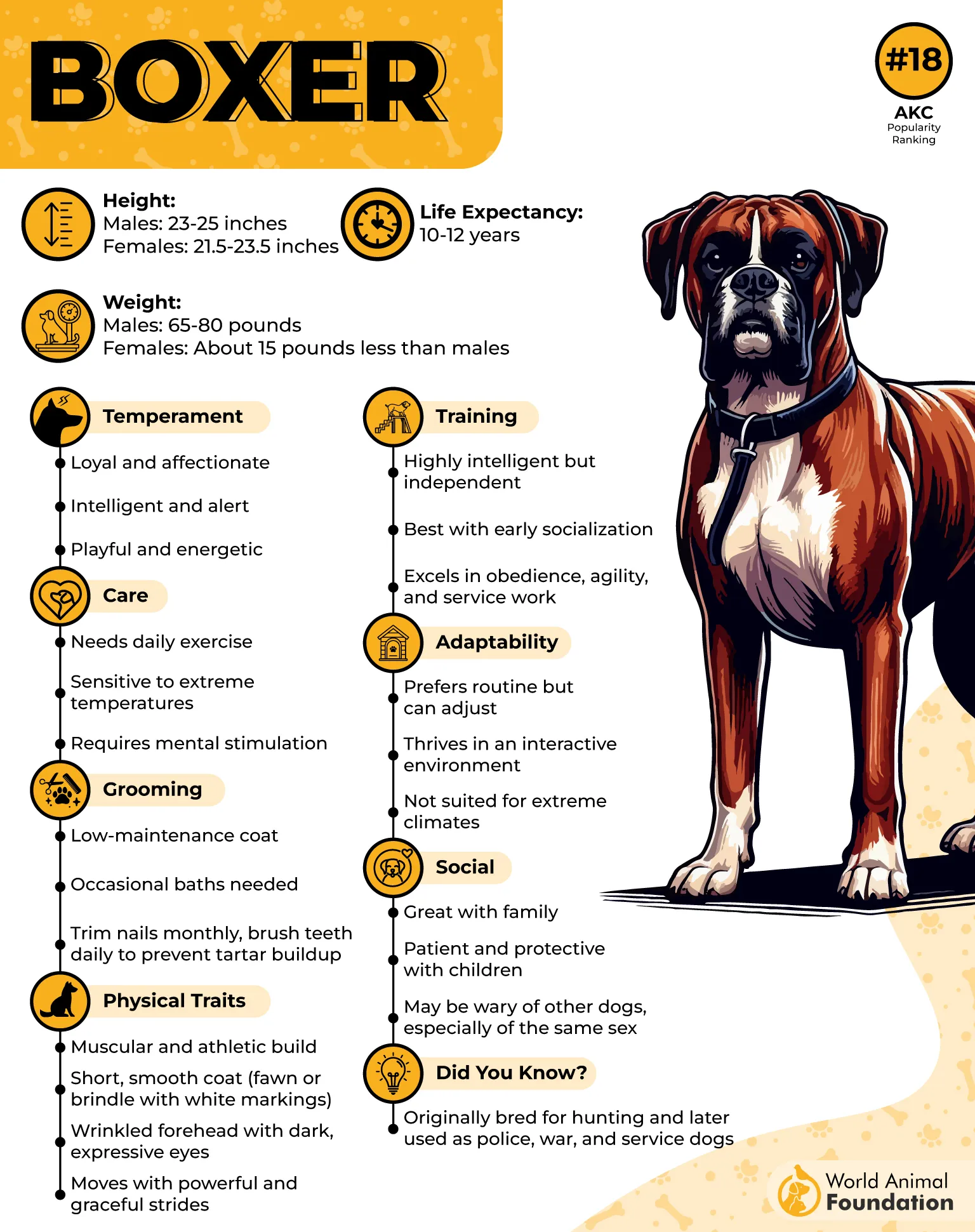
Common Health Issues
Cancer: Boxers are especially prone to lymphoma and mast cell tumors. These conditions can appear early and spread quickly.
Heart Conditions: They often suffer from a disease called aortic stenosis, where the heart’s ability to pump blood effectively is restricted. Arrhythmias are also common.
Breathing Problems: Their short noses can cause difficulty breathing in hot weather.
Vet visits are essential, especially for early cancer screening and heart checkups. As Boxers are very active and social, they need daily play, mental stimulation, and close time with their families. With the right care, they can stay happy and healthy for many years.
4. Rottweiler

Rottweilers are powerful herding dogs known for their confidence and intelligence. They are muscular dogs who can weigh anywhere from 80-110 pounds. They are highly trainable and loyal, making them perfect watchdogs.
But, like any large breed, they are prone to a problems with health. Here are a few to watch out for:
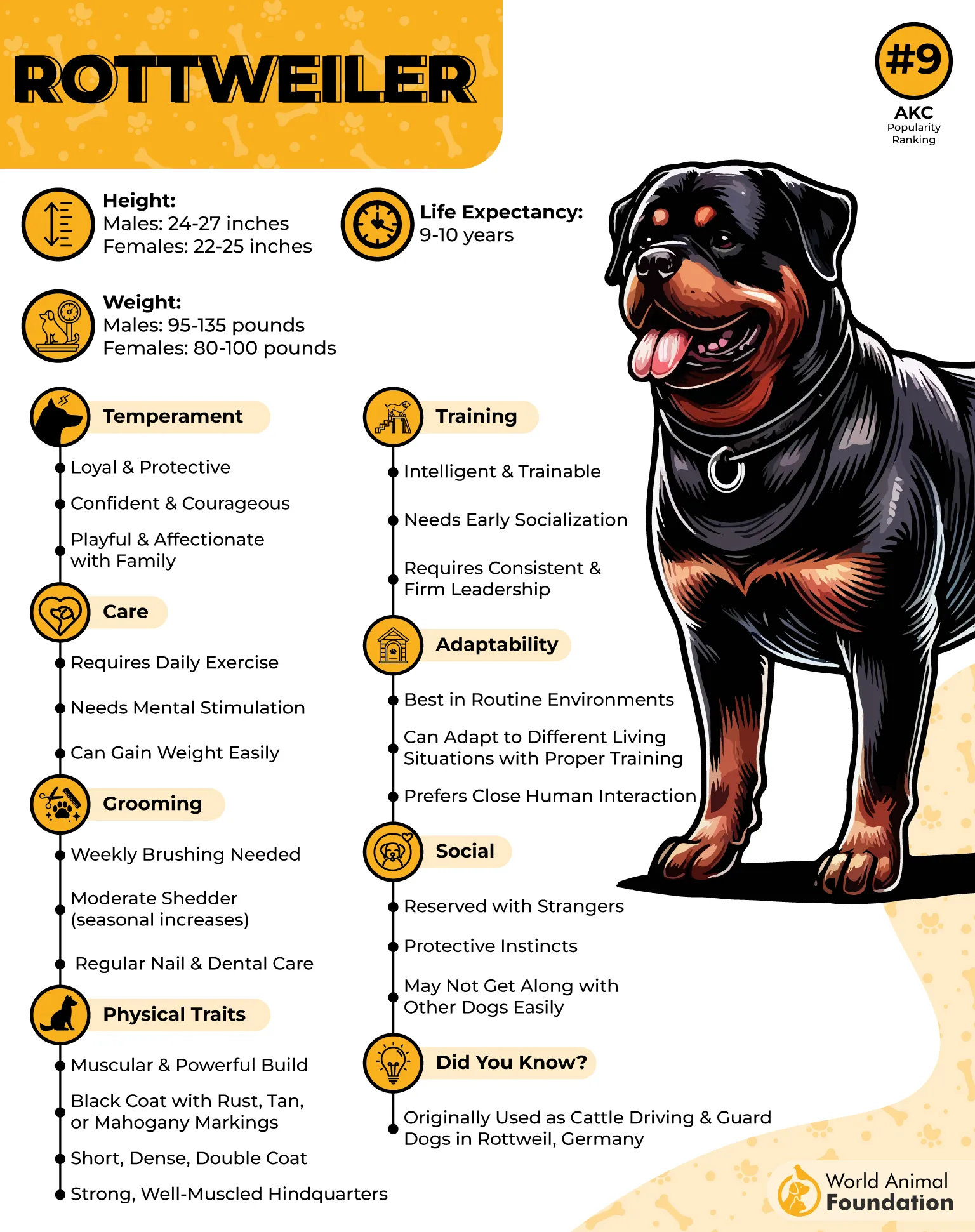
Common Health Issues
Hip and elbow dysplasia: They are prone to joint issues that can cause pain, stiffness, and difficulty walking, especially as they age.
Heart Disease: They are at risk for subaortic stenosis (SAS). It affects blood flow and can lead to sudden death if not detected early.
Cancer: Bone cancer, Osteosarcoma, is more common in Rottweilers than in other breeds.
Obesity: They gain weight easily, which puts pressure on their joints and heart.
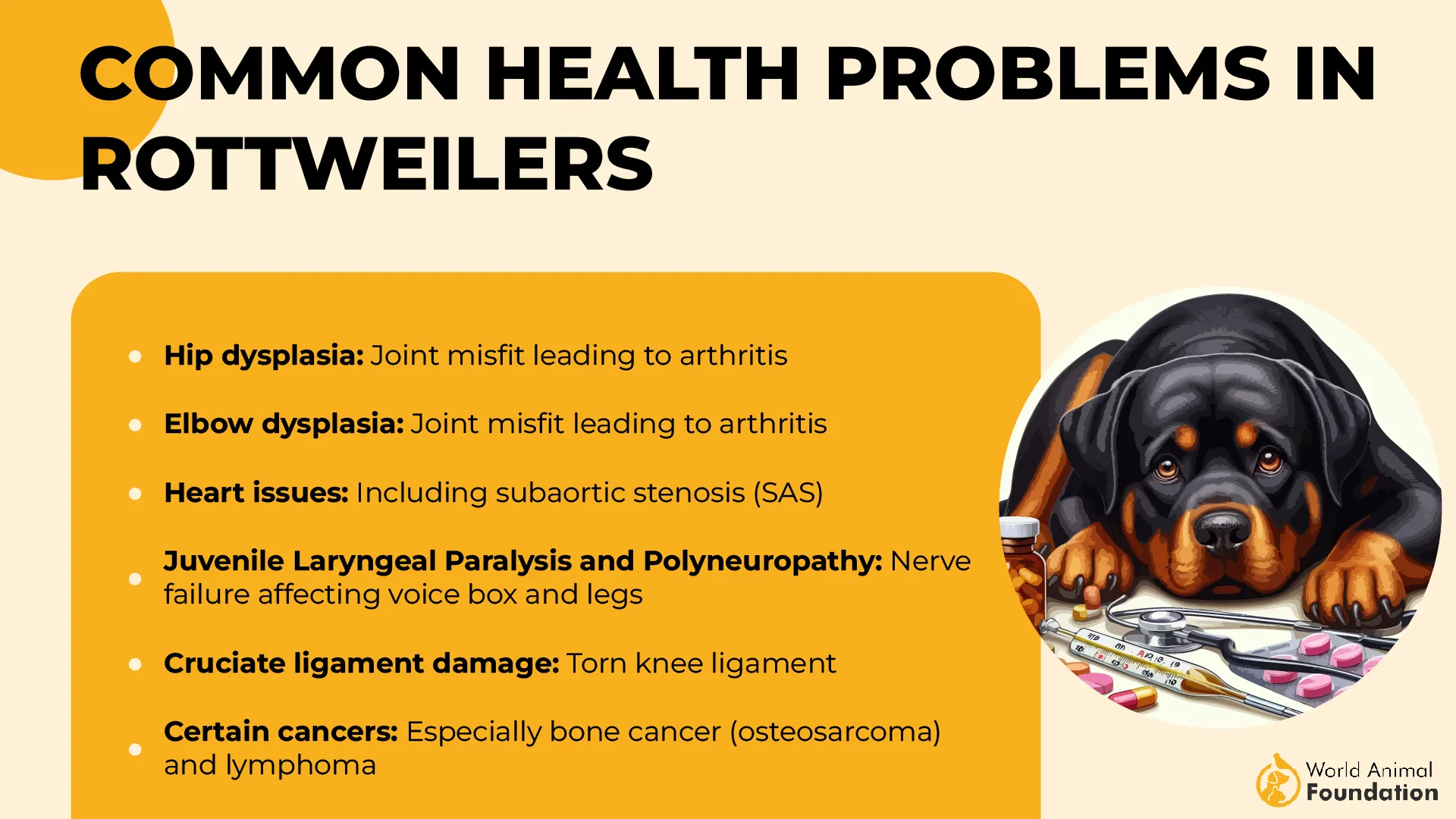
As per WebMD, to keep a Rottweiler’s joints healthy, regular exercise is important. A high-quality, portion-controlled diet keeps their weight in check. Additionally, these capable dogs also need consistent training, socialization, and mental stimulation to stay balanced and happy.
5. Cavalier King Charles Spaniel
The Cavalier King Charles Spaniel is a small, affectionate dog known for its gentle temperament. It is one of the most adored lap dog breeds. Unfortunately, due to breeding practices, it is prone to serious genetic problems.
Common Health Issues
Heart Disease: Mitral valve disease (MVD) is extremely common. It causes the heart to weaken, leading to heart failure if not treated.
Syringomyelia (SM): A painful condition where fluid-filled cavities form in the spinal cord due to the skull being smaller than the brain size. It can cause sensitivity, weakness, or even paralysis.
Ear Infections: Their long, floppy ears can trap moisture and debris, causing frequent ear infections in these dogs
Eye Conditions: Cavaliers may also develop cataracts, dry eye, or retinal problems.
If you own a Cavalier King Charles Spaniel, watch for signs of pain, head scratching, or balance issues. Keep their ears clean and dry to avoid infections. Daily brushing helps in keeping their long coat clean and knot-free.
They benefit from gentle walks and playtime and do best in homes where they are not left alone for long periods of time.
6. Pug
Pugs are small brachycephalic breeds known for their charming personalities. Due to unique low-to-ground bodies and flat faces, they are prone to a few health conditions, which are as follows:
Common Health Conditions
Breathing Difficulties: They are prone to breathing problems due to their short noses. This also causes snoring, noisy breathing, and problems getting enough air.
Eye Injuries: Their bulging eyes are prone to scratches, dryness, and ulcers
Obesity: Pugs love food and are not very active, which makes them prone to weight gain
Skin Infections: The wrinkles on the face trap dirt and moisture and lead to infections if not cleaned regularly
To keep a Pug healthy, avoid heavy exercise and always monitor them in warm weather. Short walks and indoor play are enough for their physical activity. Limit treats and gently clean their skin folds to avoid infections.
7. Doberman Pinscher

According to the AKC, the Doberman Pinscher is generally a healthy dog breed, but they are prone to some health conditions. They are sleek, powerful, and protective, a top choice for families who want a devoted guard dog.
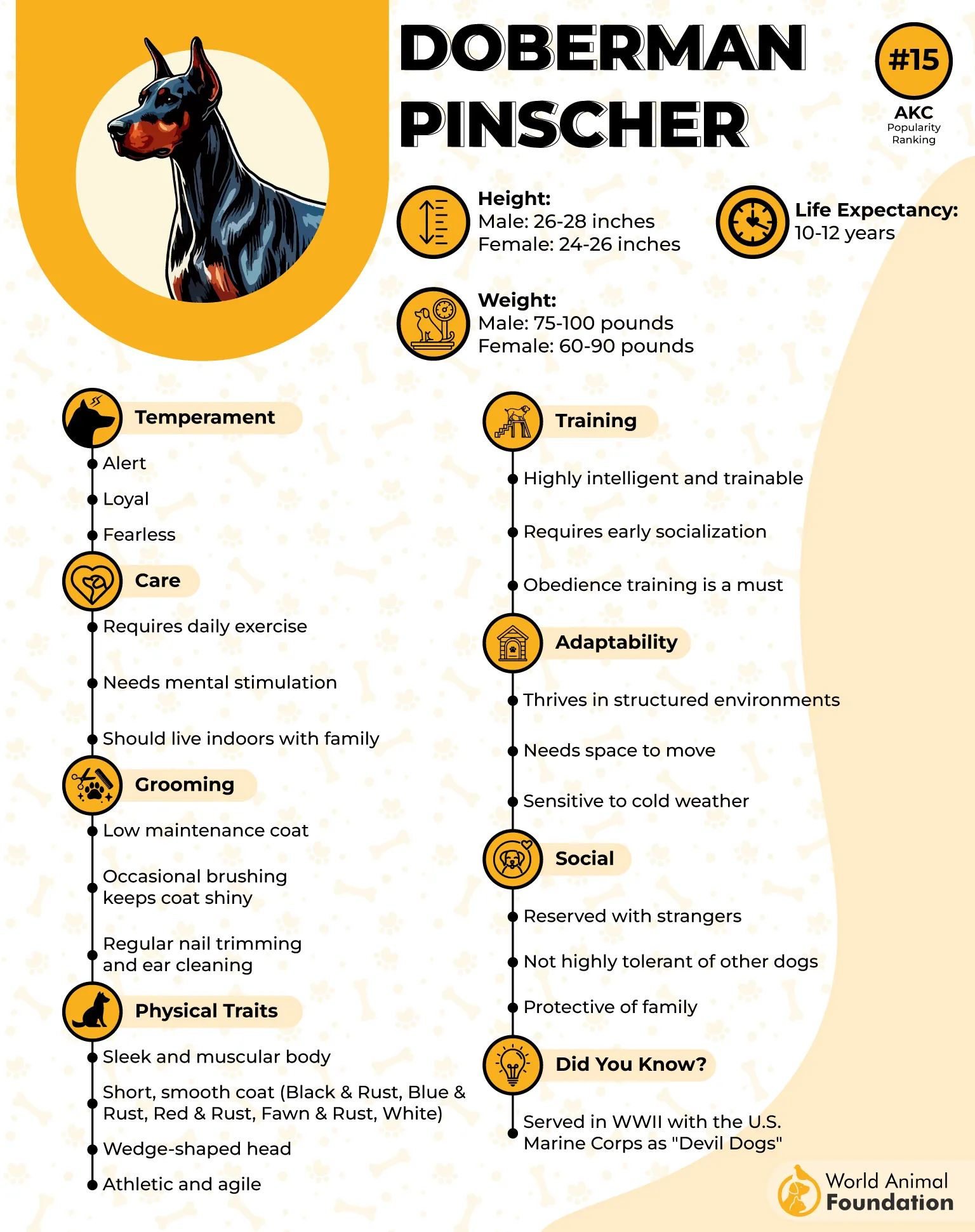
Common Health Issues
Dilated Cardiomyopathy (DCM): This is a serious heart disease where the heart becomes enlarged and weak. This life-threatening condition can lead to heart failure and often shows no signs until it is advanced.
Von Willebrand’s Disease: A blood clotting disorder that causes excessive bleeding even from small injuries
Hypothyroidism: A thyroid under-functioning which can lead to weight gain, hair loss, and low energy levels
Regular heart screenings are crucial for Dobermans. Blood work is required to recognize early signs of clotting and thyroid issues and start veterinary medicine if necessary. Controlled exercise helps maintain their strong body. Mental stimulation is also equally important, as these intelligent breeds love training and games to stay sharp.
Conclusion
Many of the world’s most popular dog breeds are also the ones that are prone to serious health problems. Breeds like the English Bulldog, Pug, and Cavalier King Charles Spaniel have been bred for specific looks that, over time, have led to breathing issues, heart diseases, and serious eye diseases. Larger dogs struggle with pain and mobility problems due to their weight.
These issues are especially common in purebred dogs since they are often bred in a limited gene pool. On the other hand, it is believed that mixed-breed dogs often have fewer genetic problems with a wider gene pool.
No matter which dog you own, it is important to study their risk factors and make routine vet visits. Understanding your dog’s needs is key to giving them a happy and healthy life!


